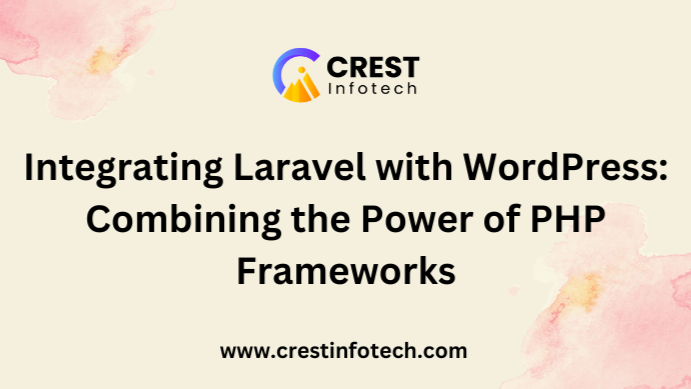
Integrating Laravel with WordPress: Combining the Power of PHP Frameworks
Laravel and WordPress are two powerful tools that serve different purposes in the PHP ecosystem. Laravel is a modern web application framework known for its elegant syntax and robust features, while WordPress is a widely-used content management system (CMS) that powers a significant portion of the web. Integrating Laravel with WordPress can bring the best of both worlds: the flexibility and performance of Laravel combined with the content management capabilities of WordPress. This article will guide you through the process of integrating these two frameworks effectively.
Why Integrate Laravel with WordPress?
Before diving into the integration process, let’s explore the reasons for combining Laravel with WordPress:
Steps to Integrate Laravel with WordPress
Step 1: Set Up Your Environments
Ensure you have both Laravel and WordPress set up in your development environment. You can use tools like Laravel Valet or Local by Flywheel to manage your development environments efficiently.
1. Install Laravel:
composer create-project --prefer-dist laravel/laravel laravel-app
2. Install WordPress: Download and install WordPress from the official website. Set it up in a directory, e.g.,
/var/www/html/wordpress.
Step 2: Use a Shared Database
Both Laravel and WordPress can use the same database, allowing you to access WordPress content from Laravel. To achieve this:
1. Configure Laravel to Use the WordPress Database: Open the .env file in your Laravel project and configure the database settings to match your WordPress database credentials:
DB_CONNECTION=mysql
DB_HOST=127.0.0.1
DB_PORT=3306
DB_DATABASE=wordpress_db
DB_USERNAME=your_db_user
DB_PASSWORD=your_db_password
领英推荐
Step 3: Access WordPress Data in Laravel
You can use Laravel’s Eloquent ORM to interact with the WordPress database tables directly. Here’s how you can achieve that:
1. Configure Laravel to Use the WordPress Database: Open the .env file in your Laravel project and configure the database settings to match your WordPress database credentials:
php artisan make:model Post
2. Define the Model: In the Post model, set the table name to the WordPress posts table:
namespace App\Models;
use Illuminate\Database\Eloquent\Model;
class Post extends Model
{
protected $table = 'wp_posts'; // Use your actual WordPress posts table name protected $primaryKey = 'ID'; // Default primary key
public $timestamps = false; // Disable timestamps
}
3. Fetch Posts from Laravel: You can now fetch posts from your Laravel application:
use App\Models\Post;
$posts = Post::where('post_status', 'publish')->get();
Step 4: Create a Custom API with Laravel
One of the significant advantages of integrating Laravel with WordPress is the ability to create custom APIs. You can expose WordPress data through Laravel routes.
1. Fetch Posts from Laravel: You can now fetch posts from your Laravel application:
Define Routes: In routes/api.php, define a route for accessing WordPress posts:
2. Access the API: You can access the posts API at https://your-laravel-app.test/api/posts, returning a JSON response of published posts.
This article explores how to integrate Laravel with WordPress, leveraging the strengths of both platforms. It provides guidance on using Laravel’s backend capabilities alongside WordPress content management to build dynamic and scalable web applications.
You can read more on the blog at Crest Infotech.